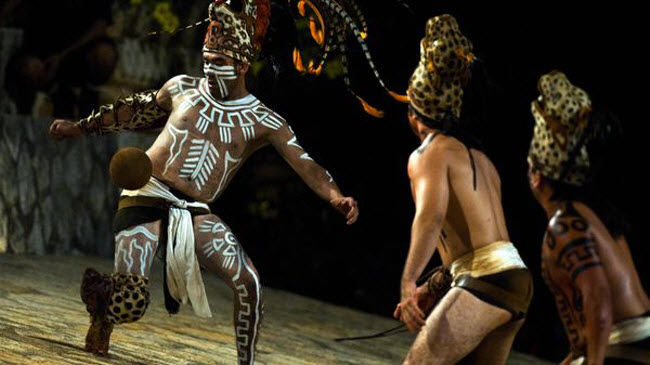Imagine watching an intense football match where one team emerges victorious over the other. As the winning team exits the field, security guards restrain the defeated players and lead them to a sacrificial altar in the center of the pitch. In front of the crowd, the referees stab each player in the chest, and while they are still alive, they tear out their hearts, lifting them high while still beating, or they decapitate them. All the while, the spectators in the stands cheer in excitement.
Certainly, this is a fantastical scenario that seems unimaginable today, but it actually happened around 1400 BC in Central America, long before Europeans arrived. This brutal sport was known as the “Mesoamerican ballgame”, sometimes referred to as the “Game of Death”. Losing a match meant losing one’s life in the most horrific manner.
According to historians, the Mesoamerican ballgame is the oldest known team sport in the world. It was banned by the Spanish conquerors due to the extreme violence they witnessed. For the indigenous peoples, the game was not merely a sport but a sacred ritual and a way to interact with the gods. One Maya legend tells of twin heroes named “Hunahpu and Xbalanque”, children of the maize god “Hun Hunahpu”, who used their athletic skills to defeat the underworld gods in the ballgame. After their victory, the underworld gods, enraged, killed the twins, but the sky gods revived them so they could defeat the underworld gods and resurrect their father, the maize god. Besides its religious significance, the game was deeply embedded in the culture of Mesoamerican civilizations such as the Olmec, Maya, and Aztec. According to their ancient texts, it symbolized a battle between the sun, representing light and good, and the moon and stars, representing darkness and evil. The ball’s movement was thought to symbolize the sun’s journey across the sky. The Maya referred to the game as “Pok-A-Tok”, the Aztecs as “Tlachtli”, and it is now commonly known as “Ulama”.

The ballgame was played on large courts, roughly the size of a modern football pitch, but with a distinctive design. From an aerial view, the court resembled the letter “I.” The walls of the court had vertical stone rings, which were the game’s objective. Teams had to pass a rubber ball through these rings to score points. The court walls were often painted in vibrant colors depicting snakes, jaguars, and birds of prey alongside images of human sacrifice. Today, nearly 1,300 ballgame courts have been discovered in Central America. It is estimated that each ancient city had at least one court, with the oldest known court being “Paso de la Amada” in Mexico, dating back approximately 3,600 years.
The exact rules of the Mesoamerican ballgame remain partially unknown, as evidence comes from ancient texts, archaeological carvings, and discovered courts. It is generally believed that teams ranged from one to four players, and players were not allowed to strike the ball with their hands. Instead, they used their knees, thighs, and elbows to pass the ball, aiming to get it through the stone ring. The first team to score won the game. Historians estimate that the large rubber balls used in the game were made from latex extracted from rubber trees in the jungle, weighing between 1.3 and 3.6 kilograms and measuring 25 to 37 centimeters in diameter—about the size of a basketball, but much denser, leading to severe injuries and fatalities when struck in the wrong place. To prevent such injuries or deaths, players began wearing protective gear, including belts, knee guards, and head helmets.

The most intriguing aspect of the game was its religious purpose related to sacrifice. Some theories suggest that the losing team had their heads cut off or chests split open to have their hearts removed, while others argue that the winning team was sacrificed instead, which was considered a great honor. The defeated team was relegated to servitude. A newer theory proposes that these sacrifices might be exaggerations and that the players sacrificed were war captives or slaves. This type of game might have been organized between rival cities or states as a form of competition without engaging in actual warfare. These theories are not mere speculation but are based on various illustrations in ancient books and stone carvings adorning ballgame courts, depicting scenes of team leaders being decapitated by other players or priests. Some images even show players using the heads of the defeated as balls.

Despite the game’s gruesome history, it’s fortunate for modern players that the contemporary version of the sport has been significantly toned down. Today, the game is played with teams of seven players who compete to strike a heavy rubber ball up and down the court using only their thighs. Historians consider it akin to football, with the main difference being the use of thighs instead of feet. When a team fails to keep the ball in play, the opposing team scores a point. Recent tournaments, held in 2006 and 2017, featured ten teams from various parts of Mexico and were organized in the ancient Maya city of “Teotihuacan”, drawing large crowds who came to enjoy and celebrate the revival of this ancient tradition.
